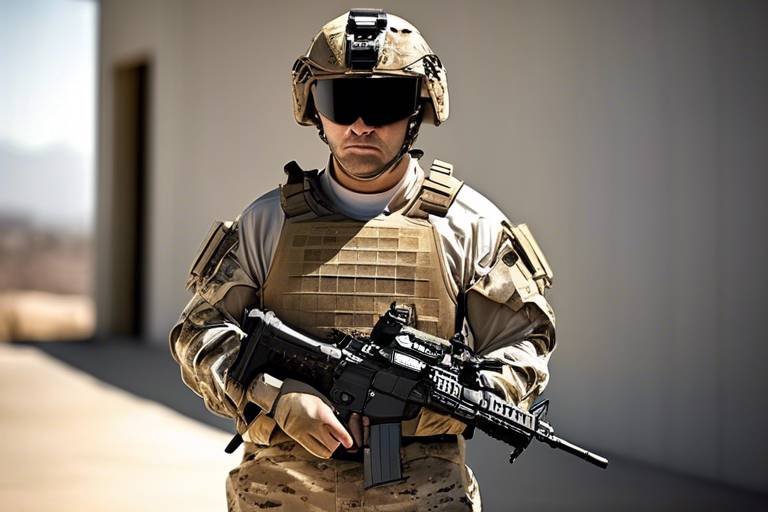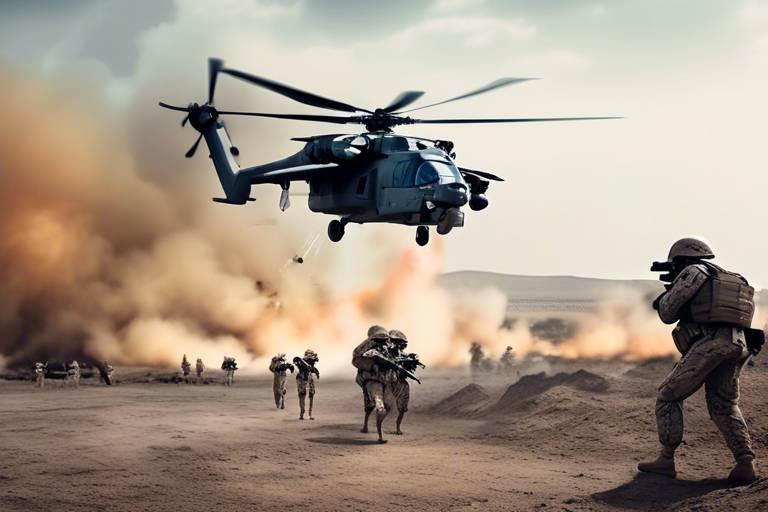Autonomous Supply Drones - Streamlining Military Logistics
In today's rapidly evolving military landscape, the integration of autonomous supply drones is not just a trend; it's a transformative leap that is reshaping how armed forces conduct operations. Imagine a battlefield where supplies are delivered with pinpoint accuracy, where the chaos of logistics is managed seamlessly by cutting-edge technology. This is not science fiction; this is the reality brought forth by autonomous drones. These flying machines are revolutionizing military logistics, offering a myriad of benefits that enhance operational efficiency and effectiveness.
As military organizations strive to maintain an edge over their adversaries, the demand for rapid resupply and efficient logistics has never been higher. Traditional supply chains, often bogged down by cumbersome processes and human error, are being replaced by agile, drone-powered solutions. These drones can traverse challenging terrains, deliver supplies directly to troops in remote locations, and do so with minimal human intervention. This not only speeds up the logistics process but also reduces the risks associated with transporting personnel into potentially dangerous areas.
The benefits of autonomous supply drones extend beyond mere speed. They offer significant cost savings by reducing the need for large transport vehicles and minimizing the manpower required for supply missions. In an era where every dollar counts, the military is keenly aware of the financial implications of logistics. By employing drones, forces can allocate resources more effectively, ensuring that funds are directed toward mission-critical areas rather than logistical overhead.
Moreover, the operational flexibility provided by these drones is unparalleled. They can be deployed quickly in response to changing battlefield conditions, allowing for dynamic resupply strategies that keep troops well-equipped and ready for action. The ability to adapt to various environments—be it dense urban settings or rugged mountains—makes autonomous supply drones an invaluable asset in modern military operations.
However, the journey toward full integration of these drones is not without its challenges. Regulatory compliance, technological limitations, and security concerns pose significant hurdles that military organizations must navigate. The complex landscape of aviation regulations can slow down the deployment of drones, while current technological constraints, such as battery life and payload capacity, can limit their effectiveness. Addressing these challenges will be crucial for the widespread adoption of autonomous supply drones in military logistics.
Despite these obstacles, the future prospects for autonomous supply drones are bright. With ongoing advancements in technology, we can expect to see improvements in drone capabilities, making them even more effective in military operations. As innovations continue to emerge, the potential for these drones to enhance logistical efficiency and operational effectiveness is limitless, paving the way for a new era in military logistics.
- What are autonomous supply drones? Autonomous supply drones are unmanned aerial vehicles designed to transport supplies and equipment without human intervention, enhancing logistics in military operations.
- How do autonomous supply drones improve military logistics? They reduce delivery times, enhance precision in supply drops, and operate effectively in challenging terrains, thus streamlining logistics.
- What challenges do military organizations face when implementing these drones? Key challenges include regulatory compliance, technological limitations, and concerns about security and reliability.
- What is the future of autonomous supply drones in military logistics? The future is promising, with ongoing advancements in technology expected to enhance drone capabilities and address current challenges.

The Evolution of Military Logistics
Military logistics has come a long way since the days of horse-drawn supply wagons and foot soldiers carrying their provisions. The evolution of logistics in armed forces is akin to a thrilling race, where technology has been the driving force propelling us forward. From the ancient Roman Empire, which relied on well-organized supply lines to maintain its vast territories, to today's sophisticated systems that incorporate autonomous supply drones, the landscape of military logistics has transformed dramatically.
In the early days, logistics was primarily about ensuring that troops had enough food, weapons, and medical supplies to sustain themselves during campaigns. The challenges were immense, often dictated by the geography of the battlefield and the limitations of transportation methods available at the time. Fast forward to the 20th century, where the introduction of mechanized vehicles revolutionized how armies operated. The ability to transport large quantities of supplies quickly became a game-changer, allowing for more strategic maneuvers and faster response times.
As we entered the 21st century, the digital age began to impact military logistics profoundly. The integration of information technology, GPS, and advanced analytics paved the way for real-time tracking of supplies, inventory management, and predictive analytics. This shift not only improved efficiency but also enhanced decision-making capabilities on the battlefield. However, the real leap forward came with the advent of autonomous supply drones.
These drones represent a culmination of decades of innovation, combining robotics, artificial intelligence, and advanced navigation systems. They can deliver supplies to troops in remote locations, minimizing the risks associated with traditional supply routes that might be exposed to enemy fire or difficult terrain. Imagine a scenario where a unit is pinned down in a hostile area, and instead of waiting for a convoy that may take hours or even days to arrive, a drone swoops in, delivering critical supplies in a matter of minutes. This is not science fiction; it's the reality we are approaching.
To understand the impact of these advancements, consider the following table that outlines key milestones in the evolution of military logistics:
| Era | Key Developments |
|---|---|
| Ancient Times | Horse-drawn supply wagons, foot soldiers carrying provisions |
| 20th Century | Mechanized vehicles, motorized transport |
| Digital Age | GPS, real-time tracking, predictive analytics |
| Present Day | Autonomous supply drones, AI integration |
As we look to the future, the evolution of military logistics will continue to be shaped by emerging technologies. Drones are not just a passing trend; they signify a shift towards a more agile and responsive military infrastructure. With the ability to operate in challenging terrains and provide precise supply drops, autonomous drones are set to redefine how military operations are conducted.
In conclusion, the evolution of military logistics is a testament to human ingenuity and the relentless pursuit of efficiency. As we embrace these technological advancements, we pave the way for a future where our armed forces can operate more effectively, ensuring that they are always equipped and ready to face any challenge that comes their way.
- What are autonomous supply drones? Autonomous supply drones are unmanned aerial vehicles designed to transport supplies to military personnel in various environments.
- How do drones improve military logistics? Drones enhance logistics by reducing delivery times, increasing precision in supply drops, and allowing operations in difficult terrains.
- What challenges do military organizations face when implementing drones? Key challenges include regulatory compliance, technological limitations, and security concerns.
- What is the future of military logistics with drones? The future looks promising, with ongoing advancements in technology likely to enhance drone capabilities and their integration into military operations.

Benefits of Autonomous Supply Drones
The introduction of autonomous supply drones into military logistics is nothing short of revolutionary. These high-tech flying machines are not just a passing trend; they are reshaping how armed forces manage their supply chains. Imagine a scenario where critical supplies, from ammunition to medical kits, can be delivered right to the front lines without the need for human intervention. This isn't science fiction—it's the reality that autonomous drones are bringing to military operations. The benefits they offer are numerous and significant, making them a game-changer in the field.
One of the most compelling advantages of using autonomous supply drones is their ability to reduce delivery times. In traditional military logistics, delays can be costly and even dangerous. Drones can fly directly to their destination, bypassing obstacles and avoiding congested routes. This capability not only speeds up the delivery of essential supplies but also enhances the overall responsiveness of military operations. For instance, during a critical mission, a drone can deliver ammunition to troops in need within minutes, a feat that would take hours or even days using conventional methods.
Moreover, these drones provide enhanced precision in supply drops. Unlike ground vehicles that may struggle to navigate difficult terrains, drones can easily access remote and rugged areas. They are equipped with advanced navigation systems that ensure supplies are dropped exactly where they are needed. This precision reduces the chances of supplies falling into the wrong hands and minimizes wastage, making every drop count. Imagine a scenario where supplies are airdropped into a specific location, ensuring that soldiers receive exactly what they need without unnecessary delays or errors.
Another notable benefit is the operational flexibility that autonomous supply drones bring to military logistics. These drones can be deployed rapidly in various environments, whether it's a desert, jungle, or urban setting. This adaptability supports dynamic military strategies and allows for quick resupply missions as situations evolve on the ground. In essence, they act as a force multiplier, enabling military units to maintain their operational tempo without being bogged down by logistical challenges.
In addition to these operational benefits, autonomous supply drones also contribute to cost efficiency. By minimizing the need for extensive manpower and reducing transportation costs, these drones allow military organizations to allocate their resources more effectively. For example, instead of deploying a convoy of vehicles to deliver supplies, a single drone can accomplish the same task, significantly lowering the costs associated with fuel, maintenance, and personnel. This cost-effectiveness is crucial, especially in times of budget constraints.
Furthermore, the use of drones decreases labor dependency. In high-risk environments, relying on personnel for supply deliveries can expose them to unnecessary dangers. Drones mitigate these risks by taking on the responsibility of delivering supplies, allowing human resources to focus on more critical tasks. This shift not only enhances safety but also improves overall mission effectiveness.
Lastly, the potential for fuel savings is another significant advantage of autonomous supply drones. These drones are designed to optimize flight paths, which can lead to substantial reductions in fuel consumption. In an era where environmental sustainability is becoming increasingly important, the ability to reduce the carbon footprint of military operations is a notable benefit. The combination of cost savings and environmental responsibility makes autonomous supply drones an appealing option for military logistics.
In conclusion, the benefits of autonomous supply drones in military logistics are vast and varied. From improving delivery times and precision to enhancing operational flexibility and cost efficiency, these drones are set to redefine how military operations are conducted. As technology continues to advance, we can expect even greater improvements in their capabilities, making them an indispensable asset on the battlefield.
- What types of supplies can drones deliver in military operations? Drones can deliver a wide range of supplies, including ammunition, medical supplies, food, and equipment.
- How do autonomous drones navigate to their destinations? Autonomous drones use advanced GPS and navigation systems to determine the best flight path to their delivery point.
- Are there any risks associated with using supply drones? While drones reduce some risks, challenges such as regulatory compliance, technological limitations, and potential security threats remain.
- What is the future of autonomous supply drones in military logistics? The future looks promising, with ongoing advancements in technology expected to enhance their capabilities and broaden their adoption in military operations.
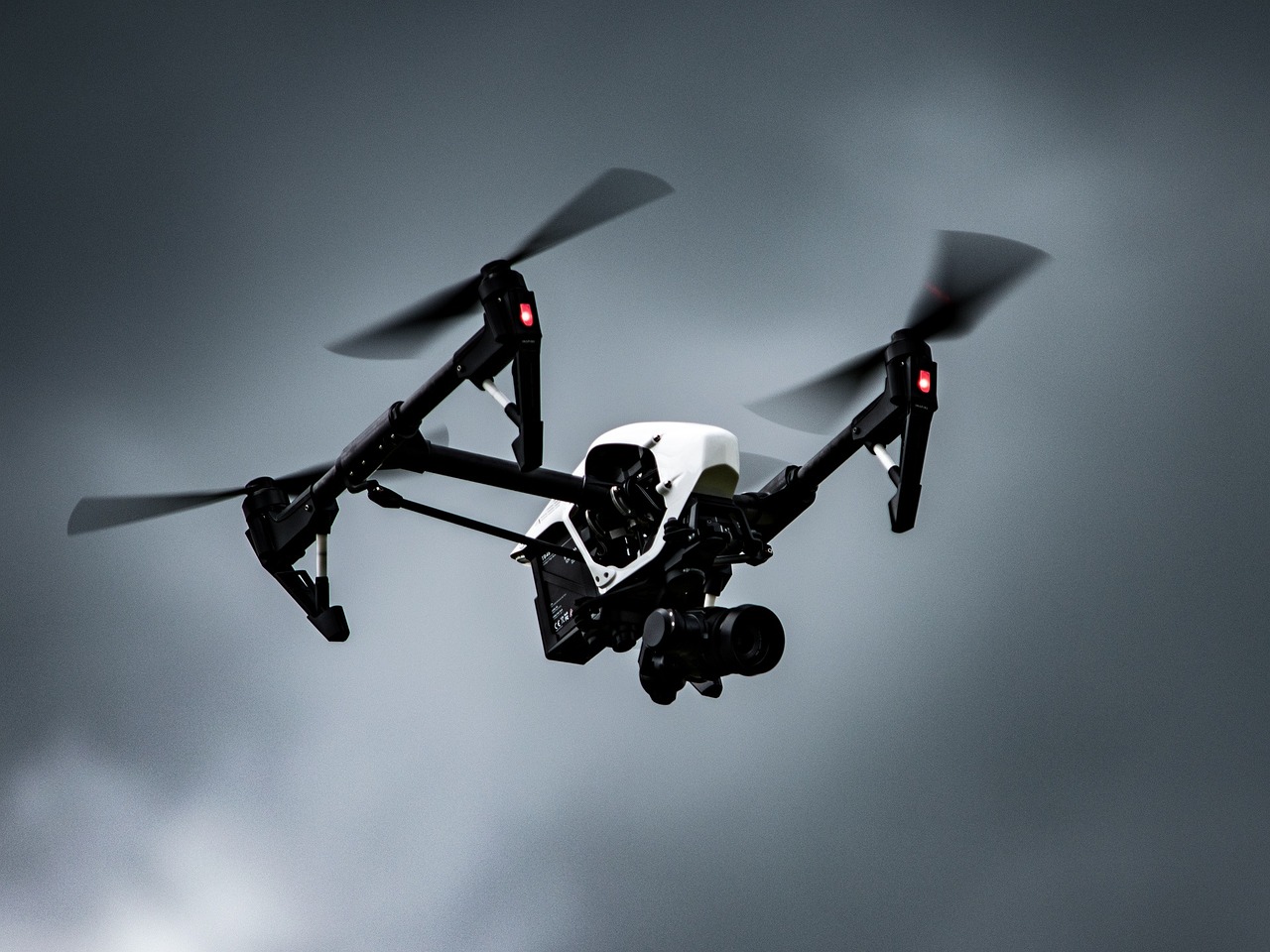
Cost Efficiency
In the fast-paced world of military logistics, has become a paramount concern. Autonomous supply drones emerge as a game-changer in this arena, offering a plethora of benefits that significantly reduce operational costs. Imagine a scenario where supplies can be delivered swiftly without the need for extensive ground transportation or large teams of personnel. This is not just a dream; it's the reality that drones bring to the table. By minimizing the need for traditional supply chains, these drones can cut down on both manpower and transportation costs, allowing military organizations to allocate their resources more strategically.
One of the most striking aspects of using autonomous supply drones is their ability to operate independently. This reduces the dependency on human labor for supply deliveries, which not only lowers costs but also enhances safety. In high-risk zones, where human presence can be dangerous, drones can navigate challenging terrains and deliver essential supplies without putting lives at risk. This shift not only saves money but also mitigates risks associated with human error, leading to a more reliable supply chain.
Furthermore, the operational flexibility that drones offer translates into significant fuel savings. Traditional vehicles often consume vast amounts of fuel, especially when navigating through difficult terrains. In contrast, drones can optimize their flight paths, ensuring that they use the least amount of fuel necessary. This not only contributes to overall cost savings but also aligns with broader goals of environmental sustainability in military operations. The less fuel consumed, the lower the carbon footprint, which is increasingly important in today's world.
To illustrate this further, consider the following table that highlights the potential savings when utilizing autonomous supply drones compared to traditional logistics methods:
| Logistics Method | Estimated Cost Savings (%) | Fuel Consumption Reduction (%) |
|---|---|---|
| Traditional Ground Transport | 0% | 0% |
| Autonomous Supply Drones | 30-50% | 20-40% |
As we can see, the potential for significant cost savings is evident. The integration of autonomous supply drones into military logistics not only enhances operational efficiency but also provides a sustainable solution to the pressing challenges of modern warfare. With advancements in technology and a growing understanding of their capabilities, the future looks bright for these drones in military logistics.
- What are autonomous supply drones?
They are unmanned aerial vehicles designed to deliver supplies without human intervention. - How do drones improve cost efficiency?
Drones reduce labor and transportation costs, optimize fuel consumption, and minimize human error. - What challenges do autonomous supply drones face?
Regulatory compliance, technological limitations, and security concerns are some of the key challenges. - What is the future of supply drones in military logistics?
With ongoing advancements in technology, the future looks promising for broader adoption of drones in military operations.

Reduced Labor Dependency
The integration of autonomous supply drones into military logistics is a game changer, especially when it comes to reducing labor dependency. Traditionally, military supply chains have heavily relied on personnel for transportation and delivery tasks. However, with the advent of drones, we are witnessing a significant shift in this paradigm. Imagine a scenario where supplies can be delivered to remote or hostile areas without putting soldiers' lives at risk. This not only enhances safety but also allows military personnel to focus on more critical tasks that require human judgment and expertise.
By utilizing drones, the military can minimize the number of personnel needed for logistical operations. This reduction in manpower is crucial, especially in high-stakes situations where every second counts. Drones can operate autonomously, navigating through challenging terrains and adverse weather conditions, which would typically require a team of skilled personnel. This capability is particularly beneficial in scenarios such as:
- Combat Zones: Drones can deliver supplies to front-line troops without exposing soldiers to enemy fire.
- Remote Locations: In areas where infrastructure is lacking, drones can reach isolated units effectively.
- Disaster Relief: Drones can quickly provide aid in emergencies, reducing the need for ground personnel in dangerous situations.
Moreover, the deployment of autonomous supply drones mitigates the risks associated with human error. In logistics, mistakes can lead to supply shortages or misdirected resources, which can have dire consequences in military operations. Drones, equipped with advanced navigation and delivery systems, ensure that supplies are delivered accurately and efficiently, thereby enhancing operational effectiveness.
In conclusion, the offered by autonomous supply drones not only enhances safety and efficiency but also transforms the way military logistics are conducted. As technology continues to advance, we can expect even greater improvements in how military organizations manage their supply chains, ultimately leading to more successful missions and better resource allocation.
- How do autonomous supply drones navigate challenging terrains?
Autonomous supply drones are equipped with advanced GPS and sensor technologies that allow them to map their surroundings in real-time, helping them avoid obstacles and navigate effectively. - What are the primary benefits of using drones in military logistics?
The main benefits include reduced delivery times, enhanced precision in supply drops, decreased labor dependency, and increased safety for personnel. - Are there any risks associated with using autonomous supply drones?
Yes, while drones offer many advantages, they also face challenges such as regulatory compliance, technological limitations, and security concerns that need to be addressed.
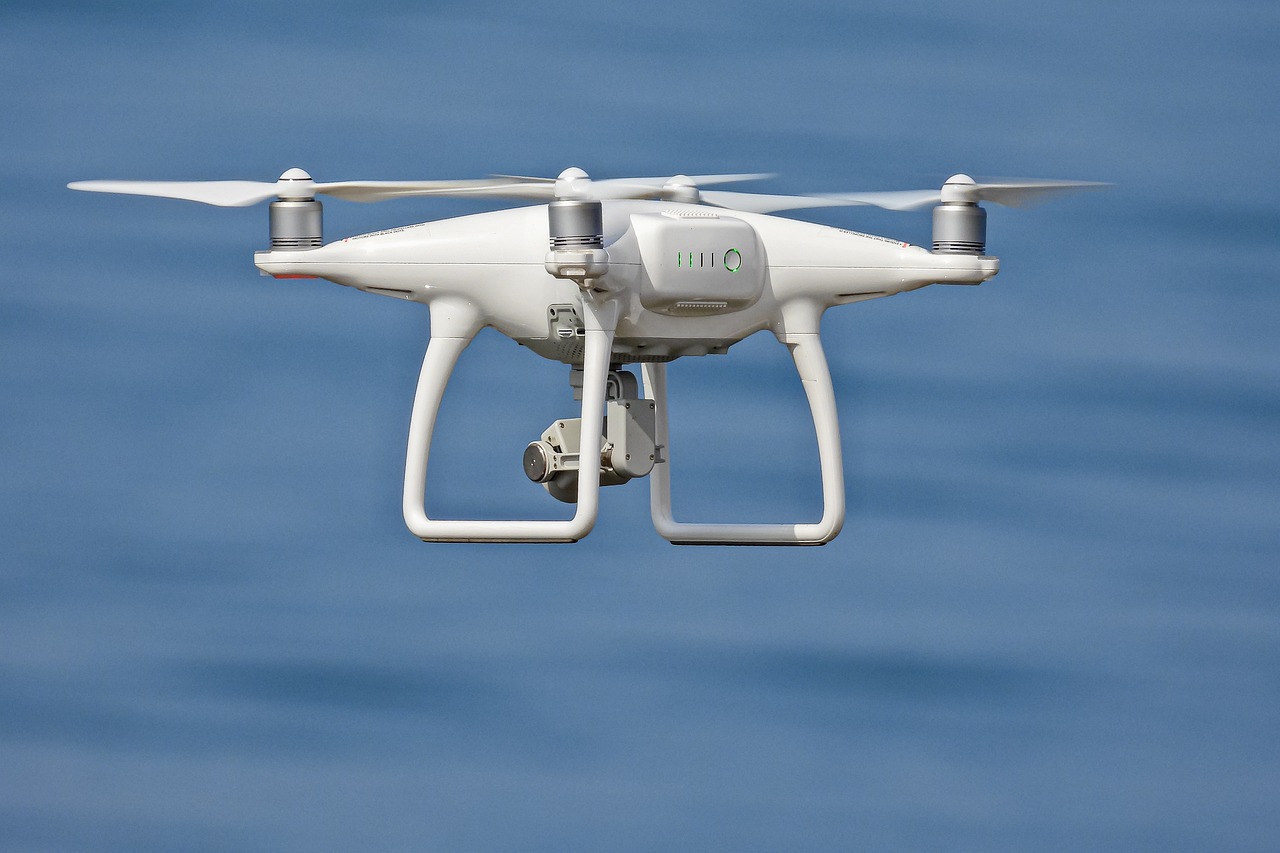
Fuel Savings
In the realm of military logistics, fuel consumption is not just a minor detail; it’s a significant factor that can impact operational costs and sustainability. Autonomous supply drones are revolutionizing how we approach fuel efficiency in military operations. Imagine a world where supplies can be delivered swiftly and efficiently, without the excessive fuel costs that traditional vehicles incur. Drones can optimize their flight paths using advanced algorithms, ensuring they take the most direct route to their destination. This not only saves fuel but also reduces the time it takes to deliver essential supplies to troops in the field.
One of the most impressive aspects of these drones is their ability to adjust their flight patterns in real-time. For instance, if a drone encounters adverse weather conditions or unexpected obstacles, it can recalibrate its route instantly, avoiding unnecessary detours that would consume extra fuel. This adaptability is akin to having a skilled navigator who can steer a ship through turbulent waters, ensuring that resources are used wisely and efficiently.
Moreover, the shift to drone logistics can lead to a substantial reduction in the carbon footprint associated with military operations. Traditional supply methods often rely on fuel-guzzling trucks and aircraft, which not only drain financial resources but also contribute to environmental degradation. By utilizing drones, military forces can significantly cut down on fuel usage, thereby promoting a more sustainable approach to logistics. The following table illustrates the potential fuel savings when using autonomous drones compared to conventional supply methods:
| Logistics Method | Average Fuel Consumption (Gallons) | Estimated Cost ($) |
|---|---|---|
| Traditional Ground Vehicles | 100 | 300 |
| Traditional Aircraft | 150 | 450 |
| Autonomous Supply Drones | 50 | 150 |
As shown in the table, autonomous supply drones can drastically reduce fuel consumption and costs compared to traditional methods. This not only makes military operations more cost-effective but also allows for better allocation of resources. With these savings, military organizations can invest in other critical areas, such as training and advanced technologies.
In conclusion, the fuel savings associated with autonomous supply drones represent a game-changing opportunity for military logistics. By embracing this technology, armed forces can enhance their operational efficiency while also promoting environmental responsibility. As we look to the future, it’s clear that the integration of these drones will play a crucial role in shaping the landscape of military logistics.
- What are autonomous supply drones? Autonomous supply drones are unmanned aerial vehicles designed to deliver supplies and equipment without human intervention.
- How do drones save fuel in military logistics? Drones optimize their flight paths and can adjust routes in real-time, significantly reducing fuel consumption compared to traditional vehicles.
- What are the advantages of using drones over traditional supply methods? Drones offer faster delivery times, lower operational costs, and reduced environmental impact.
- Are there any challenges in implementing autonomous supply drones? Yes, challenges include regulatory compliance, technological limitations, and security concerns.
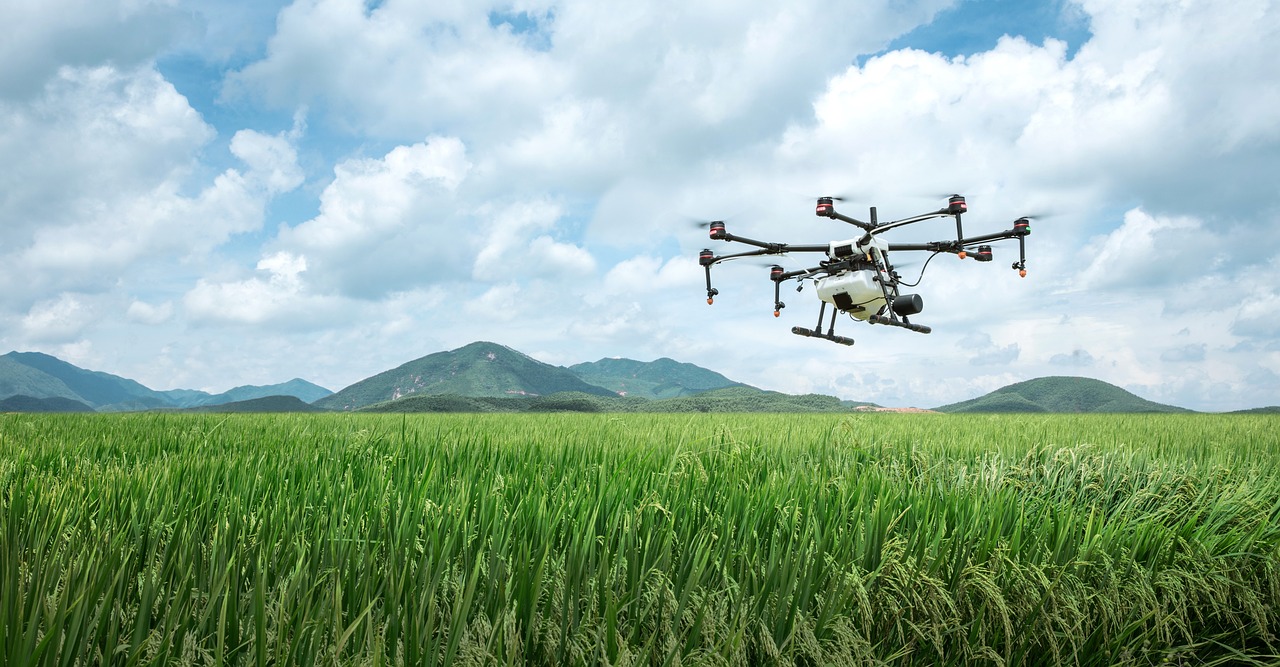
Operational Flexibility
In the fast-paced world of military operations, is not just a luxury; it's a necessity. Autonomous supply drones are revolutionizing how armed forces manage logistics by providing unparalleled adaptability. Imagine being in a remote location where traditional supply routes are compromised. These drones can swoop in, delivering essential supplies with pinpoint accuracy, no matter the terrain. Whether it's a mountainous region or a densely forested area, these drones can navigate obstacles that would hinder conventional vehicles.
One of the most compelling aspects of autonomous drones is their ability to quickly respond to changing mission requirements. For instance, if a unit finds itself in a sudden need for medical supplies or ammunition, a drone can be dispatched in real-time, significantly reducing the time it takes to get those critical resources to the front lines. This rapid deployment capability allows military strategists to maintain momentum and adapt to the fluid nature of combat situations.
Moreover, the versatility of these drones extends beyond just delivery. They can be equipped with various payloads tailored to specific missions, whether that involves transporting food, medical supplies, or even heavy equipment. This flexibility not only enhances the efficiency of logistical operations but also reduces the burden on ground troops, allowing them to focus on their primary objectives.
Another critical factor is the ability of these drones to operate autonomously in diverse environments. They can be programmed to follow pre-determined routes or adapt in real-time to changing conditions, such as weather fluctuations or enemy activity. This adaptability ensures that military operations can continue smoothly, even in unpredictable situations. The potential for autonomous decision-making means that drones can make split-second choices that human operators may not be able to, further enhancing operational effectiveness.
In summary, the integration of autonomous supply drones into military logistics not only streamlines supply chains but also introduces a level of operational flexibility that was previously unimaginable. As technology continues to advance, the capabilities of these drones will only improve, making them an indispensable asset in modern military operations.
- What are autonomous supply drones? Autonomous supply drones are unmanned aerial vehicles designed to transport supplies and equipment without human intervention.
- How do these drones improve military logistics? They enhance efficiency by reducing delivery times, minimizing manpower, and providing rapid deployment capabilities in diverse environments.
- What challenges do military organizations face when implementing these drones? Key challenges include regulatory compliance, technological limitations, and concerns regarding security and reliability.
- What is the future of autonomous supply drones in military operations? The future looks promising, with ongoing advancements in technology aimed at enhancing their capabilities and addressing current challenges.

Challenges in Implementation
While the promise of autonomous supply drones in military logistics is enticing, the road to their widespread implementation is fraught with challenges. These challenges can be likened to navigating a dense forest; while the destination may be clear, the path is often obstructed by various obstacles. One of the most significant hurdles is regulatory compliance. Military organizations must navigate a complex web of aviation regulations that govern the use of drones. This includes adhering to both national and international laws, which can vary significantly. The process of obtaining the necessary permissions can be time-consuming and may delay the deployment of these innovative technologies.
In addition to regulatory challenges, there are also technological limitations that need to be addressed. For instance, current drone technology often faces constraints in terms of battery life and payload capacity. Imagine trying to deliver supplies to troops stationed in remote areas; if a drone can only carry a limited amount of cargo and runs out of battery before reaching its destination, the mission could fail. These limitations hinder the operational effectiveness of drones, making it critical for developers to innovate and enhance drone capabilities.
Moreover, there are concerns regarding security and reliability. In military contexts, the stakes are incredibly high; any failure in the supply chain could compromise missions and endanger lives. Questions arise about the susceptibility of drones to hacking or interference, which could lead to unauthorized access to sensitive military operations. Therefore, ensuring that autonomous drones are both secure and reliable is paramount for their acceptance within military logistics.
Ultimately, while the integration of autonomous supply drones presents a multitude of benefits, overcoming these challenges is essential for their successful deployment. Addressing regulatory compliance, advancing technology, and ensuring security will pave the way for a future where these drones can operate seamlessly within military logistics. As the military continues to adapt to modern warfare's demands, the journey towards fully integrating autonomous supply drones will require collaboration between technology developers, military strategists, and regulatory bodies.
- What are autonomous supply drones? Autonomous supply drones are unmanned aerial vehicles designed to transport supplies and equipment without direct human control.
- What challenges do military organizations face when implementing these drones? The main challenges include regulatory compliance, technological limitations, and security concerns.
- How can technological limitations affect the use of drones? Limitations such as battery life and payload capacity can restrict the operational effectiveness of drones, making it difficult to deliver necessary supplies to remote locations.
- Why is security a concern for military drones? Security is crucial because any breach could lead to unauthorized access to sensitive military operations, potentially compromising missions and safety.
- What is the future of autonomous supply drones in military logistics? The future looks promising, with ongoing advancements in technology aimed at enhancing drone capabilities and addressing existing challenges.

Regulatory Compliance
The integration of autonomous supply drones into military logistics is not as simple as it might seem at first glance. One of the most significant hurdles to overcome is . The aviation sector is governed by a complex web of regulations that vary by country and region, making it challenging for military organizations to deploy these advanced technologies effectively. Imagine trying to navigate a maze while blindfolded; that's what military logistics teams face when dealing with regulatory frameworks.
Each country has its own set of rules governing airspace, flight operations, and the use of unmanned aerial vehicles (UAVs). These regulations are designed to ensure safety, security, and efficiency in air traffic management. For military drones, compliance becomes even more critical due to the sensitive nature of their operations. The potential for drones to intrude into civilian airspace or to be misused for malicious purposes raises serious concerns among regulatory bodies.
Furthermore, military organizations must also consider international regulations, especially when conducting operations in foreign territories. This adds another layer of complexity, as they must adhere to both local laws and international agreements. The challenge lies not only in understanding these regulations but also in adapting drone technology to meet compliance standards.
To navigate these regulatory waters effectively, military logistics teams often employ a multi-faceted approach, which includes:
- Collaboration with Regulatory Authorities: Establishing strong relationships with aviation authorities can help military organizations gain insights into compliance requirements and potential regulatory changes.
- Continuous Monitoring: Keeping abreast of evolving regulations is essential. This involves regular training and updates for personnel involved in drone operations.
- Technology Adaptation: Modifying drone systems to meet specific regulatory standards can facilitate smoother integration into military logistics.
In conclusion, while the promise of autonomous supply drones is immense, the path to their successful integration into military logistics is fraught with regulatory challenges. Addressing these issues head-on will require a concerted effort from military organizations, regulatory bodies, and technology developers alike. Only through collaboration and innovation can we ensure that these cutting-edge tools are used to their fullest potential, enhancing operational efficiency while adhering to safety and security standards.
- What are the main regulations governing the use of military drones? The regulations vary by country but generally include rules about airspace usage, safety protocols, and operational guidelines.
- How do military organizations ensure compliance with these regulations? They often collaborate with regulatory authorities, monitor evolving laws, and adapt their technology to meet compliance standards.
- What are the consequences of non-compliance? Non-compliance can lead to legal repercussions, operational delays, and increased risks to safety and security.

Technological Limitations
While the promise of autonomous supply drones in military logistics is undeniably exciting, there are significant that hinder their full potential. Imagine trying to navigate a maze with a blindfold on; that’s somewhat akin to what these drones face in terms of current technological constraints. For instance, the issue of battery life remains a critical concern. Most military drones are equipped with batteries that can only sustain flight for a limited duration, typically ranging from 30 minutes to a few hours. This limitation can drastically reduce their operational range and effectiveness, particularly in expansive battlefields where timely deliveries are crucial.
Moreover, the payload capacity of these drones poses another hurdle. Although some advanced models can carry a decent amount of supplies, they still fall short of the capacity needed for larger military operations. This limitation often necessitates multiple trips for a single supply run, which can lead to delays and increased vulnerability during missions. The challenge is akin to trying to fit a square peg into a round hole; the drones simply cannot accommodate the extensive logistical needs of modern military operations without compromising efficiency.
Additionally, the navigation systems employed by these drones can be susceptible to interference, particularly in conflict zones where electronic warfare tactics may be used by adversaries. This vulnerability raises concerns about the reliability of drone deliveries in critical situations. If a drone loses its way or is forced to land prematurely due to technical failures, it could jeopardize the mission and endanger troops on the ground.
Furthermore, the integration of autonomous drones into existing military frameworks presents its own set of challenges. Military logistics are often complex, involving intricate supply chains and coordination with various units. The introduction of drones requires substantial adjustments to operational protocols, including training personnel to effectively manage and maintain these advanced systems. This transition can be both time-consuming and costly, creating resistance among traditionalists who may be hesitant to embrace such technological shifts.
In summary, while autonomous supply drones hold immense potential for revolutionizing military logistics, their current technological limitations must be addressed to fully realize their capabilities. As advancements in battery technology, payload capacity, and navigation systems continue to evolve, the military may eventually find a way to overcome these challenges, paving the way for a more efficient and effective logistics framework.
- What are the main technological limitations of autonomous supply drones?
The main limitations include battery life, payload capacity, navigation system vulnerabilities, and integration challenges with existing military logistics. - How does battery life affect the operation of military drones?
Limited battery life restricts the operational range and duration of flights, which can lead to delays in supply deliveries during critical missions. - Can the payload capacity of drones be improved?
Yes, ongoing advancements in drone technology aim to enhance payload capacities, but current models still face limitations compared to traditional supply methods. - What impact do navigation system vulnerabilities have on drone missions?
Navigation system vulnerabilities can lead to drones losing their way or being forced to land prematurely, jeopardizing the mission and the safety of troops. - How are military organizations adapting to the integration of drones?
Military organizations are investing in training and developing new protocols to incorporate drones effectively into their logistics operations while addressing existing challenges.
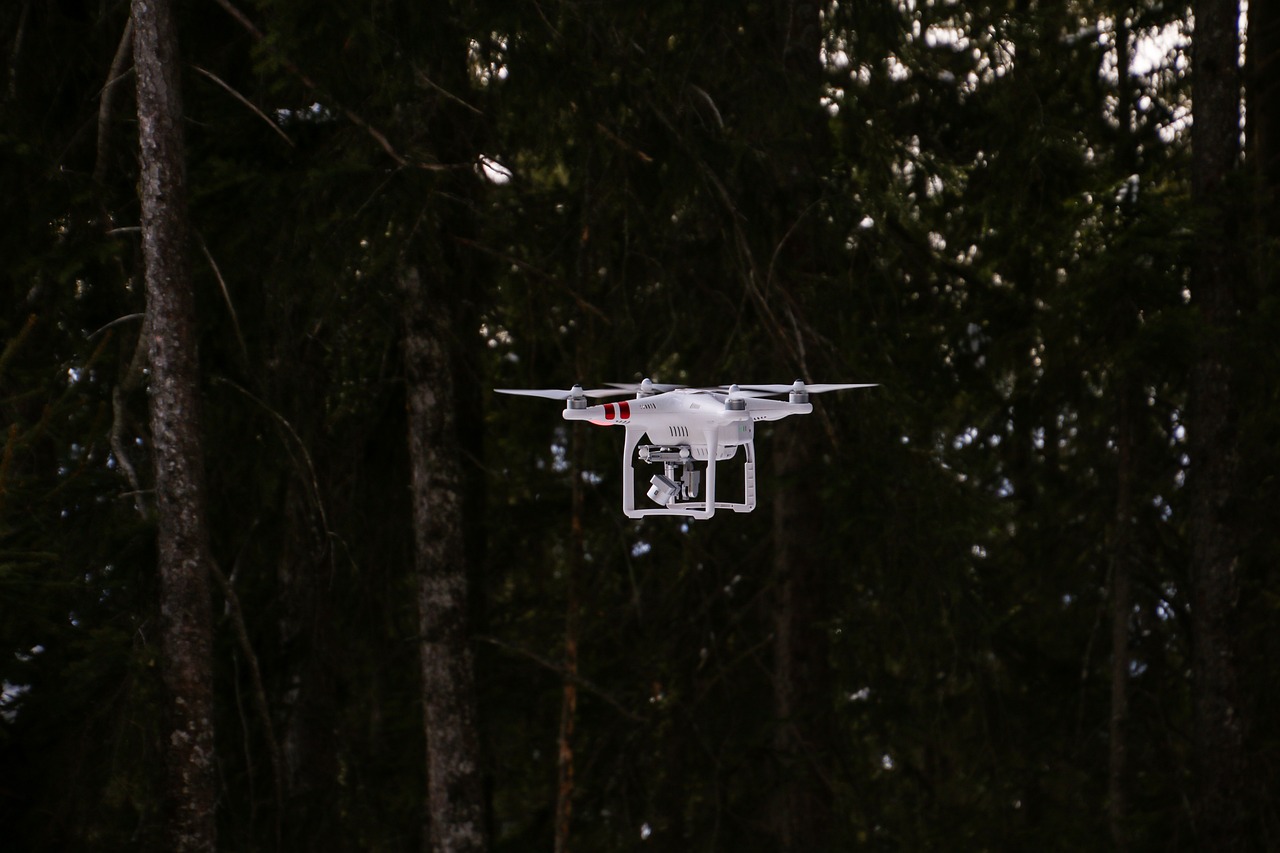
Future Prospects of Supply Drones
The future of autonomous supply drones in military logistics is not just bright; it's practically glowing with potential! As we stand on the brink of a technological revolution, these drones are set to become indispensable tools for armed forces around the globe. Imagine a battlefield where supplies are delivered with pinpoint accuracy, where troops can receive critical resources in real-time, and where logistical nightmares become a thing of the past. This isn't science fiction; it's the future of military operations, and it's coming faster than you might think.
With advancements in technology, we are witnessing a rapid evolution in the capabilities of these drones. For instance, innovations in artificial intelligence and machine learning are enabling drones to make smarter decisions, navigate complex environments, and even avoid obstacles autonomously. This means that in the near future, we could see drones that not only deliver supplies but also assess the situation on the ground, adapting their routes and strategies in real-time. The integration of 5G technology will further enhance communication and control, allowing for seamless coordination between drones and military personnel.
Moreover, as battery technology continues to improve, we can expect longer flight times and greater payload capacities. This could lead to drones capable of carrying heavier supplies over longer distances, making them even more effective in remote or hostile environments. For example, a drone that can deliver medical supplies to an isolated unit within minutes can be a game-changer in combat situations. The ability to provide timely support can significantly enhance operational effectiveness and save lives.
However, the journey ahead is not without its bumps. While the prospects are promising, we must also address the challenges that lie ahead. For instance, the need for robust security measures cannot be overstated. As these drones become more prevalent, they may become targets for cyber-attacks or interference, which could compromise their effectiveness. Therefore, investing in advanced cybersecurity protocols is essential to safeguard these vital assets.
Additionally, as military organizations explore the use of supply drones, they must navigate the complex landscape of regulatory compliance. Working closely with aviation authorities will be crucial to ensure that these drones can operate safely and effectively within national airspace. This collaboration will pave the way for the development of new regulations that accommodate the unique needs of military logistics while ensuring public safety.
In conclusion, the future of autonomous supply drones in military logistics is not just a possibility; it's an impending reality that promises to reshape how armed forces operate. As technology continues to advance, we can expect to see these drones playing a pivotal role in enhancing operational efficiency, reducing risks, and ultimately saving lives. The battlefield of tomorrow will be a place where logistics are streamlined, and support is just a drone flight away.
- What are autonomous supply drones?
Autonomous supply drones are unmanned aerial vehicles designed to transport supplies and equipment without direct human control, utilizing advanced navigation and delivery systems. - How do supply drones improve military logistics?
They enhance efficiency by reducing delivery times, minimizing human error, and allowing for rapid resupply in challenging environments. - What challenges do military organizations face when implementing supply drones?
Challenges include regulatory compliance, technological limitations, and security concerns related to their operation in military contexts. - What advancements are expected in the future for supply drones?
Future advancements may include improved AI capabilities, better battery technology, and enhanced security measures to protect against cyber threats.
Frequently Asked Questions
- What are autonomous supply drones?
Autonomous supply drones are unmanned aerial vehicles designed to deliver supplies without human intervention. They utilize advanced navigation and control systems to transport goods efficiently, especially in challenging environments.
- How do autonomous drones improve military logistics?
These drones enhance military logistics by reducing delivery times, increasing precision in supply drops, and allowing operations in difficult terrains. This results in improved efficiency and effectiveness during military operations.
- What are the cost benefits of using supply drones?
Supply drones help cut costs significantly by minimizing the need for manpower and reducing transportation expenses. This allows military resources to be allocated more effectively, maximizing operational budgets.
- Are there any safety concerns associated with autonomous drones?
While autonomous drones reduce human error, there are still safety concerns regarding their reliability and security. Ensuring these drones operate safely in military contexts is crucial for successful implementation.
- What challenges do military organizations face when implementing drones?
Military organizations encounter several challenges, including navigating complex aviation regulations, addressing technological limitations like battery life, and ensuring the security of drone operations.
- What is the future of autonomous supply drones in military operations?
The future looks bright for autonomous supply drones, with ongoing technological advancements aimed at enhancing their capabilities. As these challenges are addressed, broader adoption in military logistics is expected.
- Can drones operate in adverse weather conditions?
While many drones are designed to withstand various weather conditions, their operational effectiveness can be limited by extreme weather like heavy rain, strong winds, or snow. Continuous improvements in technology aim to enhance their resilience.
- How do supply drones ensure the security of delivered supplies?
Supply drones can be equipped with encryption and tracking systems to ensure the security of delivered items. Additionally, military protocols are often in place to safeguard sensitive materials during transport.






